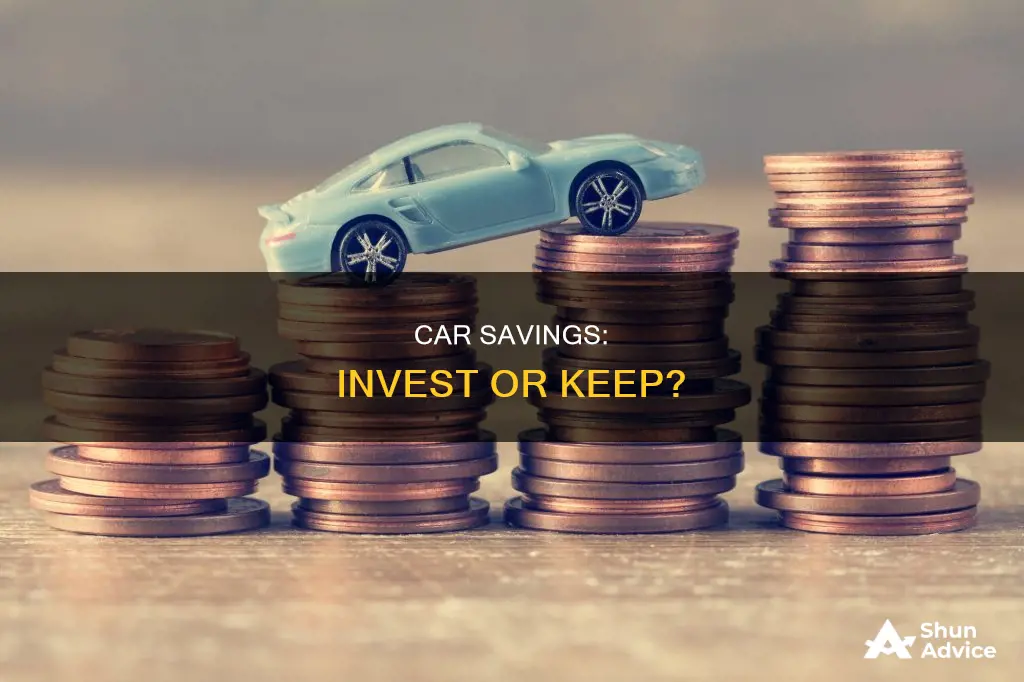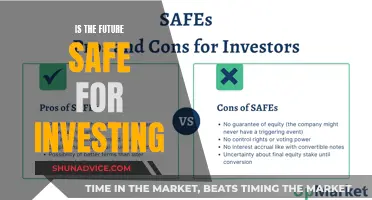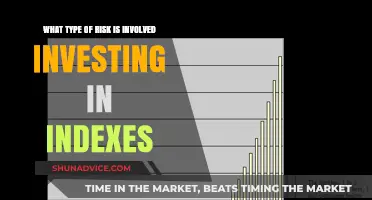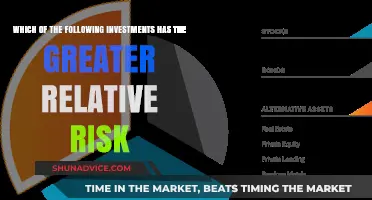
Saving for a car can be a challenging process that requires discipline and financial planning. While investing your car savings in the stock market may be tempting due to the potential for higher returns, it's generally not recommended because of the associated risks and volatility. Instead, financial experts advise keeping your car funds in a savings account, where your principal is protected and you don't have to worry about losing money. This is especially true if you need the cash within the next few years. High-yield savings accounts, money market accounts, and certificates of deposit (CDs) are all options to consider, each offering different benefits in terms of interest rates, flexibility, and security.
| Characteristics | Values |
|---|---|
| Where to keep your savings | Savings account |
| Why a savings account | Your money is protected for up to $250,000 per person if your bank is FDIC-insured |
| You don't have to worry about losing money | |
| Savings accounts are ideal if you need the money soon | |
| The stock market can be volatile and you could end up with losses | |
| High-yield savings account | Has a high interest rate |
| You can withdraw your money at any time | |
| Most are FDIC-insured | |
| Money market accounts | Offer similar interest rates to high-yield savings accounts |
| You can use your money with a debit card, checks, or both | |
| Certificates of deposit (CDs) | Offer fixed interest rates |
| You can't deposit more money after setting it up |
What You'll Learn

Savings accounts vs. brokerage accounts
Savings accounts and brokerage accounts both allow you to put your money away for the future. However, there are some key differences between the two. This article will outline the pros and cons of each type of account and explain when it is better to use one over the other.
Savings Accounts
Savings accounts are a good option if you want to put your money somewhere safe while still earning interest. They are also a good choice if you need access to your money quickly, as they are more liquid than brokerage accounts. Savings accounts are FDIC-insured, which means that your money is protected for up to $250,000 per person. This can give you peace of mind, especially if you are saving for something important, such as a car.
However, the interest rates on savings accounts tend to be lower than those on brokerage accounts, and they may not offer as high returns. Additionally, savings accounts are restricted in the number of outgoing transactions you can make.
Brokerage Accounts
Brokerage accounts are investment accounts that allow you to purchase securities such as stocks, mutual funds, and bonds. They offer the potential for much higher returns than savings accounts, and you can select higher-yield investments to maximise your gains. Brokerage accounts are a good option if you want to invest your money for the long or short term and are comfortable with the risks involved.
However, the value of your investments can decrease as well as increase, and nothing is guaranteed. Brokerage accounts may also come with fees and trading costs, and you may need to keep a minimum balance in your account.
Both savings accounts and brokerage accounts have their advantages and disadvantages. If you want quick access to your money and the security of FDIC insurance, a savings account is a good choice. On the other hand, if you are looking for higher returns and are comfortable with the risks and potential costs, a brokerage account may be more suitable. Ultimately, the best option for you will depend on your financial goals and risk tolerance.
529 Savings Plans: Smart Investment Strategies, per Forbes
You may want to see also

High-yield savings accounts
- Capital One 360 Performance Savings Account: This account offers a competitive interest rate of 4.00% and has no monthly maintenance fee or minimum balance requirement. It also provides access to over 70,000 ATMs.
- EverBank Performance Savings: With a high interest rate of 5.05%, no monthly maintenance fee, and no minimum balance requirement, this account is a great option for maximizing your savings. It also offers access to over 100,000 fee-free ATMs and provides up to $15 per month in reimbursements for out-of-network ATM fees.
- Marcus by Goldman Sachs High-Yield Online Savings Account: This account offers a solid interest rate of 4.10% and has no monthly maintenance fee or minimum deposit requirement. Marcus also provides 24/7 customer service and has received high customer satisfaction ratings.
- Varo Savings Account: The Varo Savings Account offers an impressive interest rate of up to 5.00% on balances up to $5,000 if you receive $1,000 in qualifying deposits each month. It has no fees or minimum balance requirements, making it a great option for new savers.
- ETRADE Premium Savings Account: With an interest rate of 4.25% and no monthly maintenance fee or minimum balance requirement, this account is a good choice for investors looking for a place to park their cash. However, there is no access to ATMs with this account.
- UFB Portfolio Savings: UFB Portfolio Savings offers an excellent interest rate of up to 4.57% on all balances and includes an ATM card for withdrawals. It is owned by Axos Bank, an FDIC-insured institution, and provides access to over 91,000 fee-free ATMs. However, there is a limit of six free withdrawals per month, with a $10 fee for each additional withdrawal.
- American Express High Yield Savings Account: This account offers a competitive interest rate of 4.00% and has no monthly maintenance fee or minimum balance requirement. American Express also provides a well-regarded mobile app and good customer service. However, there is no access to ATMs or check-writing privileges with this account.
- Laurel Road High Yield Savings: Laurel Road offers a high interest rate of 4.50% and charges no monthly fees or minimum balance requirements. It is the online arm of KeyBank, so you'll need to be comfortable with a completely digital banking experience.
- Quontic Bank High Yield Savings: Quontic Bank offers a solid interest rate of 4.25% and has no monthly maintenance fee. It also provides good customer service, including live chat support. However, there is a minimum deposit requirement of $100 to open and maintain the account, and there are no ATM fee reimbursements.
- SoFi Checking and Savings Account: This account offers a competitive interest rate and comes with a rewards checking account. There are no minimum deposit requirements, and you'll have access to thousands of ATMs nationwide through the Allpoint network. However, there are no ATM fee reimbursements, and you must meet certain requirements to earn the high yield.
Investing vs. Saving: What's the Real Difference?
You may want to see also

Money market accounts
If you're looking for a place to keep your car savings, money market accounts are a strong contender, offering a good balance of interest earnings and flexibility.
Investing vs. Saving: Which is Riskier?
You may want to see also

Certificates of deposit (CDs)
CDs tend to offer higher interest rates than savings accounts do, so you may be tempted to keep your car funds in one. But right now, that doesn't make much sense. CDs aren't paying much more than savings accounts these days, so for that minimal boost in interest, it's not worth having to lock yourself into a preset CD term.
If you end up having to cash out a CD early, you'll generally be penalized to the tune of several months of interest. And while that's not a huge loss with today's lower interest rates, it's also a situation not worth putting yourself in.
Saving for a car takes effort. While you may be inclined to invest your car funds to reach your savings goal sooner, there's a lot of risk in going that route. You're better off keeping that money in a traditional savings account and doing your best to keep adding to it until you have enough to drive off with the vehicle of your choice.
CDs are best for individuals looking for a guaranteed rate of return that’s typically higher than a savings account. In exchange for a higher rate, funds are tied up for a set period of time and early withdrawal penalties may apply.
When you put your money in a CD, you earn a fixed interest rate for a specific amount of time on the money you deposit when you open an account. Term lengths typically range from three months to five years.
While a CD is similar to a savings account, the traditional CD model differs in a couple of important ways:
- You can only deposit money into the CD once at the beginning of the term. You can't make additional contributions over the CD's term. Sometimes, there's a minimum deposit requirement (usually $500 and up).
- You can't access your money before your term ends or you'll get hit with an early withdrawal penalty. The penalty fees can vary depending on your bank and your CD's term length, but it's usually the interest earned or the interest you would have earned, over a certain number of days or months. Generally, the longer the CD term length, the costlier the withdrawal penalty.
Once the CD matures (when the term is over), you can get your money back, in addition to the interest earned over time, or move the money into a new CD. CD terms usually auto-renew at the rate offered at maturity if you don't do anything.
One of the reasons you might want to consider a CD over a high-yield savings account is because savings accounts have variable APYs, and with a CD you lock in the rate the day you open the account. This can be good if you open an account when interest rates are high. It's not so great if you open an account after the Federal Reserve slashes interest rates.
Pros and cons of CDs
Some of the pros and cons of CDs are quite the same, and whether you see something as good or bad depends on other factors.
Pros
- Fixed interest rates (a good thing when rates are high)
- Can't touch CD funds until the term is up (a good thing so you're not tempted to spend)
- Different CD types allow you to have options, such as bump-up CDs (for raising your rate), no-penalty CDs (for easy withdrawals), add-on CDs (for making additional contributions), jumbo CDs (for large deposits) and IRA CDs (for retirement)
Cons
- Fixed interest rates (a bad thing when rates are low or if rates go up while you're in the middle of a CD term)
- Can't touch CD funds until the term is up (a bad thing if you need that money)
- Early withdrawal penalty fees
- Can generally only deposit money into a CD once at the beginning of the term and can't make additional contributions
- At times there's a minimum deposit requirement, usually $500 and up
Saving Relationships: Worth the Investment?
You may want to see also

Leasing vs. buying
When it comes to deciding between leasing and buying a car, there are several factors to consider. Here is a detailed overview of the advantages and disadvantages of both options:
Leasing a Car
Leasing a car means renting it for a specific period, usually 24 or 36 months. Leasing typically offers lower upfront and monthly costs compared to buying. It also gives you the opportunity to drive a more luxurious vehicle than you could otherwise afford. Here are the pros of leasing:
- Lower upfront cost: Leasing may require a smaller down payment or none at all, making it more financially manageable.
- Lower monthly payments: Lease payments are generally lower than loan payments for a new vehicle, as you're only paying for the car's depreciation during the lease term.
- Warranty coverage: Many new cars come with a warranty that covers repairs for the first few years, which often overlaps with the lease period.
- New car every few years: With leasing, you can return the car at the end of the lease and get a new one, allowing you to enjoy the latest car technology.
- No resale hassle: You don't have to worry about selling or trading in the car at the end of the lease; simply return it to the dealer.
However, there are also some cons to leasing:
- Mileage restrictions: Most leases have annual mileage limits, and you'll be charged a premium for exceeding them.
- Wear and tear charges: You may incur additional costs for any excessive wear and tear beyond normal scratches and dings.
- Early termination fees: Ending the lease early can be expensive, and you'll typically be charged cancellation fees.
- No ownership: You don't build equity in the vehicle, and your monthly payments continue if you choose to renew the lease or lease a new car.
- Additional fees: There may be various fees, such as an acquisition fee, excess mileage charges, and charges for wear and tear.
Buying a Car
Buying a car means you own it outright and can build equity with monthly payments if you finance the purchase. Buying offers more control and flexibility than leasing. Here are the pros of buying:
- No mileage restrictions: You can drive as many miles as you want without worrying about extra fees.
- No wear and tear charges: You won't be charged for any wear and tear on the vehicle, as you own it.
- Ability to sell or trade-in: You can sell or trade in the vehicle at any time, giving you control over its disposal.
- Long-term cost savings: Buying a car and keeping it for an extended period is generally cheaper than leasing multiple cars over the same time frame.
- Customization: You have complete control over modifications and improvements to the vehicle since you own it.
However, there are also some cons to buying:
- Higher upfront and monthly costs: Buying a car typically requires a higher down payment and slightly higher monthly loan payments compared to leasing.
- Long-term maintenance: As the owner, you're responsible for all repairs and maintenance, which can be costly, especially after the warranty period.
- Resale value: Cars depreciate over time, and if you consider your vehicle an investment, this can be a disadvantage.
In summary, leasing is suitable for those who want lower monthly costs, desire a new car with the latest technology every few years, and don't want the hassle of selling their car. On the other hand, buying is generally a better long-term financial decision, as it allows you to build equity, provides more control and flexibility, and can result in cost savings over the long run.
Invest Your Savings: Safe Strategies for Beginners
You may want to see also







